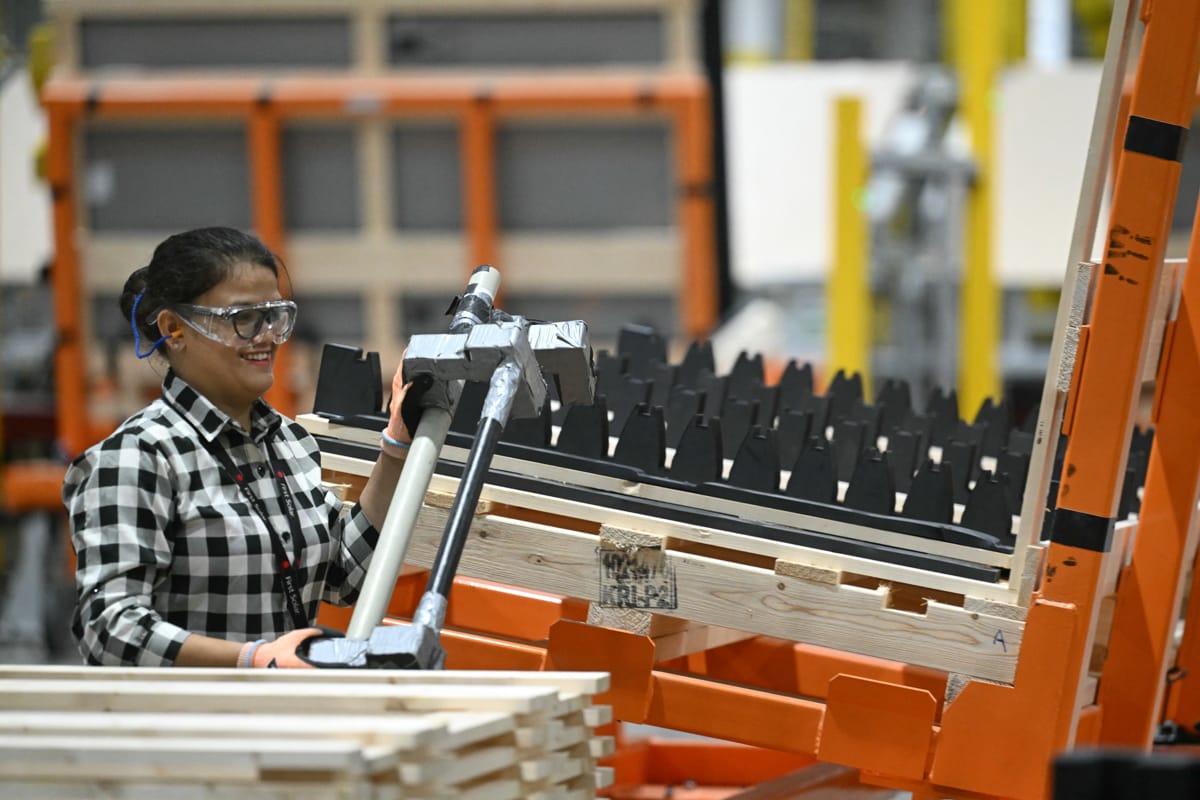The persistent gap between male and female labour market participation is a trend common to all regions of the world. Across the Indo-Pacific region, research shows that women are not benefiting from job growth in new sectors as much as men.
A missing link in the conversation on improving women’s participation in the Indo-Pacific economies is the role of trade. The region, which has an outsized influence on geopolitics and accounts for nearly half of global trade, can be critical for accelerating women’s economic participation and promoting inclusive growth through trade.
The inextricable link between gender equality and trade has become well established in recent years. Trade directly improves women’s lives, by creating better jobs, increasing women’s wages and welfare, and creating opportunities for women to move into higher-skill work and entrepreneurship. Firms that are part of global value chains demonstrably employ more women in developing countries. Women make up 33% of the workforce of firms that engage in international trade, compared with 24% in firms that do not.
The impact of trade on gender equality is wide-ranging – trade enhances women’s access to education, healthcare and technology.
Women are under-represented in global supply chains, work in vulnerable and precarious conditions, and are concentrated in low-skilled employment.
Despite its potential for improving outcomes for women, gender has received little attention in international trade. Globally, only 15% of firms engaged in international trade are led by women. In OECD countries, 27% of women’s jobs are dependent on exports, compared to 37% for men. International trade is not favourable for women who face a wide range of barriers that include social norms and gender biases, mobility constraints, policy and legal hurdles, and restricted access to finance, technology and information.
However, recent trends in international trade present an opportunity for increasing women’s participation. This includes the overall increase in regional and cross-border trade and the dominance of global value chains, the rise of services in trade, and the expansion of green trade and digital trade.
Together these shifts represent the need for a workforce with upgraded skills, creating space for more women to enter the trade sector.
Governments and multilateral and international organisations have more recently started acknowledging that trade is not gender-neutral and seeking ways to address the global gender gaps in trade. This year’s G20 presidency under Brazil has identified boosting women’s participation in international trade as an organisation priority for the first time.
Gender provisions are also increasingly a part of trade policy and trade agreements. According to the World Trade Organisation, as of September 2022, 101 of the Preferential Trade Agreements out of 353 included an explicit reference to gender issues. Very few of these gender-related commitments, however, are enforceable.
Interestingly, the WTO, which has been advocating for gender-inclusive trade, has its own gender gaps to fill. Only 36% of ambassadors and 30% of ministers in charge of decision-making at WTO are women.

Australia has been seeking to elevate the conversation on gender segregation in trade. It endorsed the WTO’s Buenos Aires Declaration on Trade and Women’s Economic Empowerment in 2017, and in February 2024 became a member of the Global Trade and Gender Agreement. A new International Gender Equality Strategy being developed by the Department of Foreign Affairs and Trade will reflect the commitment to reduce gender gaps in trade.
The Indo-Pacific, which includes some of the world’s largest economies as well as the fastest-growing economies, and “mega-regional” free trade agreements, has the potential to propel inclusive economic growth and improve the economic security of women.
There are several ways for the region to work towards this goal. Established regional forums for economic cooperation such as the Association of Southeast Asian Nations and the Asia-Pacific Economic Cooperation forum can play a critical role in engaging governments, the private sector and businesses to promote inclusive trade in the region.
Gender mainstreaming is integrated into newer initiatives, including the Indo-Pacific Economic Framework for Prosperity (IPEF), a regional initiative of 14 governments to build economic integration in the Indo-Pacific, with Australia, the United States, Japan and India as members. IPEF lists trade as one of its four core pillars, and explicitly underlines the need for inclusivity in trade, removing barriers to economic empowerment and encouraging greater participation by women.
Gender equality must be a critical part of building supply chain resilience in the region. Women are under-represented in global supply chains, work in vulnerable and precarious conditions, and are concentrated in low-skilled employment.
The Supply Chain Resilience Initiative (SCRI) between Australia, India and Japan could be another initiative to promote increased employment and entrepreneurship opportunities for women. IPEF, SCRI and the Quad group each list enhancing the workforce of supply chains in critical sectors as a priority, and could have targeted training and skilling programs with gender quotas.
Trade facilitation directly benefits women and enhances their participation in trade-related services. Countries such as India and Australia, leaders in trade facilitation, can work with countries in South Asia and the Pacific to promote gender-sensitive trade facilitation processes in their neighbourhoods.
The Indo-Pacific region, most often cited as a geopolitical flashpoint for trade, can be at the forefront of advancing a gender-inclusive trade agenda.

